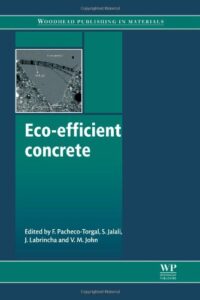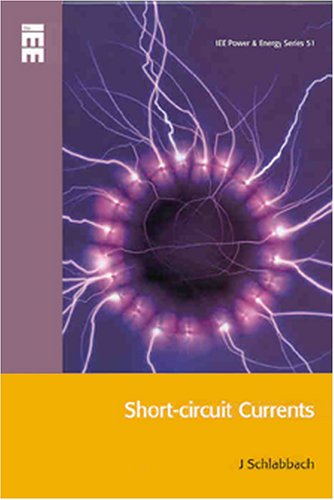| Book Name: | Eco-efficient Construction and Building Materials |
| Language: | English |
| Format: | |
| Free Download: | Available |
Eco-efficient Construction and Building Materials by Fernando Pacheco Torgal and Said Jalali | PDF Free Download.
| Book Details : | |
|---|---|
| Language | English |
| Pages | 256 |
| Format | |
| Size | 5.39 MB |
Eco-efficient Construction and Building Materials

Eco-efficient Construction Contents
- Introduction
- Toxicity of Construction and Building Materials
- Energy
- Construction and Demolition (C&D) Wastes
- Binders and Concretes
- Masonry Units
- Cement Composites Reinforced with Vegetable Fibres
- Earth Construction
- The durability of Binder Materials
- Nanotechnology Achievements
- Selection Process
Introduction to Eco-efficient Construction and Building Materials PDF
The most important environmental problem faced by Planet Earth is related to the increase of the mean air temperature (IPCC 2007; Schellnhuber 2008), which is due to the increase of carbon dioxide (CO2) in the atmosphere.
In the early eighteenth century, the concentration level of atmospheric CO2 was 280 parts per million (ppm), at present it is already 430 ppm and growing at a pace above 2 ppm/yr.
Keeping the current level of emissions (which is unlikely given the high economic growth of less developed countries with consequent increases in emission rates) will imply a CO2 concentration of 550 ppm in the year 2050 (Stern 2006).
The rise in the mean air temperature will lead to a rise in the sea level caused by the thermal expansion of the water.
Until 2100, the sea level is expected to rise, between 0.18 and 0.59 m (Meehl et al. 2007). When the sea level rises above 0.40 m it will submerge 11% of the area of Bangladesh and as a result of this fact will lead to almost 10 million homeless (IPCC 2007).
This rise does not include the melting of the ice caps, whose impacts are not quantified accurately and can be very substantial, meaning a rise in sea level of almost seven meters (Broecker and Kunzig 2008).
Another consequence of the increase in the mean air temperature is the occurrence of increasingly extreme atmospheric events. Long-term dry periods could enhance the action of fires, heavy rains, and even hurricanes (Allan and Soden 2008; Liu et al. 2009; Zolina et al. 2010).
Saunders and Lea (2008) mentioned that between 1996 and 2005 the occurrence of hurricanes, increased 40% due to an increase of only 0.5C in the temperature of seawater.
The rise in the seawater temperature will eventually stop the thermohaline circulation (Fig. 1.1), which is related to the movement of ocean mass due to its salinity and temperature (together with the action of the wind), being responsible for carrying heat from the tropics to areas of higher latitudes.
In the Polar regions, the water becomes denser and sinks moving back to the South. The thermohaline circulation in the North Atlantic is responsible for the fact that the climate on the West coast of Europe is more moderate than in other areas located on the same latitude (Vellinga and Wood 2002),
It is also responsible for the increase in the level of oxygen at the bottom of the ocean. If the thermohaline circulation stops, it will lead to extreme weather events and serious changes in oceanic biodiversity (Meehl et al. 2007; Vellinga and Wood 2008).
The rise in the mean air temperature may also lead to the permafrost (permanently frozen ground) thawing, where approx. 1 9 106 million tons (1,000 giga-tones) of CO2 are still retained.
In order to comprehend this number, we should remember that the atmosphere already contains 0.7 million tonnes 9 106 (750 giga-tones) of CO2 and that the human activity produces annually 6.5 gigatons of CO2 (Bourne 2008).
Some projections show that the rise in the mean air temperature will also lead to an increase in desert-like areas (Fig. 1.2). The majority of CO2 emissions come from burning fossil fuels for energy production.
Coal plants are responsible for 20% of CO2 emissions worldwide and it is known that China, as the world’s largest producer of coal, puts into operation a new coal plant every two weeks. Chinese coal plants are responsible for 80% of electricity generation (Shealy and Dorian 2009).
One of the most obvious and immediate consequences of burning coal is the fact that 16 of the 20 most polluted cities of the Earth are located in China, in addition, the World Bank estimates that every year 400,000 people die in China,
Because of poor air quality (Wang and Watson 2010). China recently surpassed the United States in terms of global CO2 emissions; however, this scenario can get worse because China still has a very low level of CO2 emissions per capita (5 ton.), when compared to the emissions of the United States (20 ton.).
Since the increase in the world population that is expected to rise from the current 5,600 to 7,900 million inhabitants in 2050 (UN 2008) will occur in countries with low CO2 emissions per capita, this does not constitute an optimistic scenario in terms of agreements to reduce overall CO2 emissions.
It is then understandable why the countries present in the Copenhagen Climate Summit (2009) failed to reach a binding and ambitious agreement towards the reduction of CO2 emissions (Goldenberg and Prado 2010).
Despite this lack of agreement, it is inevitable that in a short period all countries must lower their CO2 emissions and most industrialized countries should do it more significantly. Another serious environmental problem relates to the loss of biodiversity caused by human activity.
The Convention on Biological Diversity, an organization founded in 1993, defines biodiversity as ‘‘the diversity among living organisms, whatever their origin, including terrestrial, marine and other aquatic ecosystems and the ecological complexes of which they are part, which includes diversity within species, between species and of ecosystems’’.
No one knows for sure how many species exist on Planet Earth. According to the report ‘‘Global Biodiversity Outlook’’, of the Convention on Biological Diversity, 1.75 million species have already been identified. However, their number is estimated to be much higher, approaching 15 million.
The current rate of species extinction varies between 1,000 and 10,000 times higher than the average extinction paleontology rate.
In Europe alone, 42% of mammals, 15% of birds, and 45% of butterflies and reptiles are at risk of extinction.
The climate change, the high rates of urbanization, the excessive exploitation of resources, and the consequent production of waste, are high-risk factors for the preservation of biodiversity:
Mankind already uses almost 50% of freshwater reserves and the scenarios for the increase in the world population, create a serious problem.
Almost 50% of world grain is fed to livestock rather than consumed directly by humans.
Agriculture, cattle, and other livestock consume 70% of the freshwater reserves.
Approximately 24% of the land is already cultivated with some plant species (Millenium 2005).
The use of water for cotton irrigation purposes led to a decrease of 74% of the Aral Sea area, which once would have been the fourth largest lake in the world (Micklin 2007).
Between 1960 and 1990 the use of fertilizers increased by 300% (Millenium 2005). The major part of fertilizers used in agricultural processes is dragged into lakes, rivers, and into the sea, contributing to eutrophication (Spiertz 2010).
Currently, only 12% of the soils and 0.5% of the seas are subject to conservation measures.
Over the past 300 years, there has been a 40% reduction in the forest area (Ring et al. 2010).
Each year 13.7 million hectares of forest are thinned. This results in a negative net balance of 7.3 million hectares per year (Gore 2009).
Almost 20% of coral reefs have been destroyed and another 20% are at risk (Millenium 2005).
Transportation accounts for 26% of global carbon dioxide emissions, and existing projects indicate an increase in emissions in this sector (Chapman 2007).
Between 1960 and 2000 the production of plastic resins increased 25-fold, while reused plastic only grew by 5% (Derraik 2002).
In the U.S. alone 50,000 million plastic bottles are landfilled (Gore 2009).
Between 500,000 million to one billion plastic bags are used each year, some of which end up as waste in the oceans
Moore et al. (2001) mention a deposit of plastic waste floating in the Pacific Ocean with a diameter of about 1,000 km and almost 3 million tons known as the ‘‘The Great Pacific garbage patch’’.
According to Moore (2008) most of these plastics, among others, are eaten by turtles, fish, and seabirds (Fig. 1.3).
Beyond the ethical arguments related to the importance of all species’ intrinsic value, biodiversity guarantees water and air purification, production of food resources, and other products such as vaccines, antibiotics, etc.
For instance, approximately 80% of the major crops benefit from the action of natural pollinators like bees.
Unfortunately, the deaths of large amounts of swarms have become frequent (Genersch 2010). Part of the explanation for this phenomenon is related to the high amount of pesticides used in agricultural production (Brittain et al. 2010).
The increase in CO2 emissions will also lead to the acidification of seawater, with negative consequences in coral reefs putting habitats of high economic value at risk (Anthony et al. 2008).
Coral reef habitats represent fish resources that feed more than 1,000 million people and have an economic value estimated at 20,000 million € (Bourne 2008).
According to Costanza et al. (1998), the services provided free of charge by Nature reach almost 33 billion (1012) dollars/year.
As a comparison, the global GDP in the same period was 18 billion (1012) dollars per year, roughly half the value of the services and products provided by Nature.
Balmford et al. (2002) studied the economic benefits of the protection of areas subject to conservation measures, pointing to a gain of 1 to 100.
A study began in 2007 under the G8 and five emerging economies (Brazil, China, India, Mexico and South Africa), shows that the investment in the protection of ecosystems may have a return between 25 and 100 times the amount invested (Ring et al. 2010).
For instance, the expansion of marine protected areas from the current 0.5% to 30%, would generate a benefit between 40 and 50 billion dollars.
Download Eco-efficient Construction and Building Materials in PDF Format For Free.
Related More Books
See More POST On : Engineering Books









![[PDF] Draw Buildings and Cities in 15 Minutes Draw Buildings and Cities in 15 Minutes pdf](https://www.freepdfbook.com/wp-content/uploads/2021/06/Draw-Buildings-and-Cities-in-15-Minutes-218x150.jpg)








![[PDF] Digital Image Processing An Algorithmic Introduction Using Java Digital Image Processing An Algorithmic Introduction Using Java](https://www.freepdfbook.com/wp-content/uploads/2022/06/Digital-Image-Processing-An-Algorithmic-Introduction-Using-Java.jpg)




![[PDF] 43 Years JEE ADVANCED + JEE MAIN Chapterwise & Topicwise Solved Papers 43 Years JEE ADVANCED (1978-2020) + JEE MAIN Chapterwise & Topicwise Solved Papers Physics PDF](https://www.freepdfbook.com/wp-content/uploads/2022/03/43-Years-JEE-ADVANCED-1978-2020.jpg)

![[PDF] Problems in Physical Chemistry for JEE (Main & Advanced) Problems in Physical Chemistry for JEE (Main & Advanced) Free PDF Book Download](https://www.freepdfbook.com/wp-content/uploads/2022/03/Problems-in-Physical-Chemistry-for-JEE-Main-Advanced.jpg)
![[PDF] Engineering Physics (McGraw Hill)](https://www.freepdfbook.com/wp-content/uploads/2021/05/bafc8c2685bb6823a9c56134f7fba5df.jpeg)

![[PDF] Engineering Chemistry By Shashi Chawla](https://www.freepdfbook.com/wp-content/uploads/2022/05/Theory-And-Practicals-of-Engineering-Chemistry-By-Shashi-Chawla-free-pdf-book.jpeg)
![[PDF] Chemistry: An Introduction to Organic, Inorganic & Physical Chemistry Chemistry: An Introduction to Organic, Inorganic & Physical Chemistry](https://www.freepdfbook.com/wp-content/uploads/2022/04/Chemistry-An-Introduction-to-Organic-Inorganic-Physical-Chemistry.jpg)
![[PDF] Essentials of Physical Chemistry Essentials of Physical Chemistry Free PDF Book by Bahl](https://www.freepdfbook.com/wp-content/uploads/2022/04/Essentials-of-Physical-Chemistry-bahl.jpg)
![[PDF] Biological control of plant-parasitic nematodes: soil ecosystem management in sustainable agriculture Biological control of plant-parasitic nematodes: soil ecosystem management in sustainable agriculture](https://www.freepdfbook.com/wp-content/uploads/2022/05/Biological-control-of-plant-parasitic-nematodes-soil-ecosystem-management-in-sustainable-agriculture.jpg)
![[PDF] Human Anatomy: Color Atlas and Textbook Human Anatomy: Color Atlas and Textbook Free PDF Book](https://www.freepdfbook.com/wp-content/uploads/2022/05/Human-Anatomy-Color-Atlas-and-Textbook.jpg)
![[PDF] Concepts of Biology Book [Free Download]](https://www.freepdfbook.com/wp-content/uploads/2022/05/Concepts-of-Biology.jpg)
![[PDF] Essentials of Biology [Free Download] Essentials of Biology Free PDF BOok Download](https://www.freepdfbook.com/wp-content/uploads/2022/05/Essentials-of-Biology-Free-PDF-Book-Downlaod.jpg)
![[PDF] Human Biology Book [Free Download]](https://www.freepdfbook.com/wp-content/uploads/2022/05/PDF-Human-Biology-Book-Free-Download.jpg)


